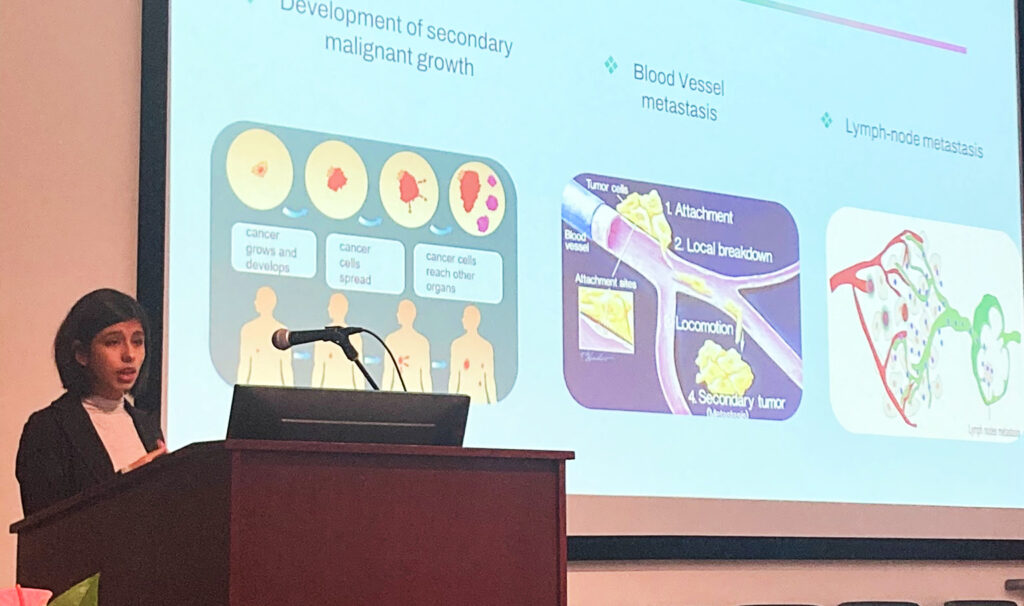The below information is based on the National Cancer Institute’s “Dictionary of Cancer Terms” and information from Breastcancer.org and Memorial Sloan Kettering Cancer Center).
* Cancer is a disease caused by abnormal cells that are growing too rapidly.
* Breast cancer is cancer that forms a tumor in the tissues of the breasts, typically the ducts (tubes that carry milk to the nipple) and lobules (glands that make milk).
* When breast cancer spreads, the cells remain breast cancer cells. For example, if it spreads to the lungs, the patient would be diagnosed with metastatic breast cancer, not lung cancer, because the cancer cells in the lung tumor are formed from cancerous breast cells, not lung cells.
* Metastatic breast cancer refers to cancer that originated in the breast, but has spread to other parts of the body. It occurs when cells from a primary tumor (a tumor in the area where the cancer originally formed) break off and move through the bloodstream and/or the lymphatic system to other parts of the body. It is considered Stage IV breast cancer.
* Women and men can both get breast cancer, however women are 100 times more likely to be diagnosed with it.
* Physicians have identified gene mutations that predispose someone to breast cancer and can be passed on in generations: BRCA1, also known as Breast Cancer gene 1 (the gene mutation Angelina Jolie has) and BRCA2, or Breast Cancer gene 2. However, most cases of breast cancer occur in patients who have no family history of the disease. Physicians continue to look for genetic factors that may predispose someone to the disease.
* Breast cancer is the second most common type of cancer in women (second to skin cancer).
* In 2010, the National Breast Cancer Coalition, the nation’s largest breast cancer advocacy organization, set a deadline for the end of breast cancer: January 1, 2020.





